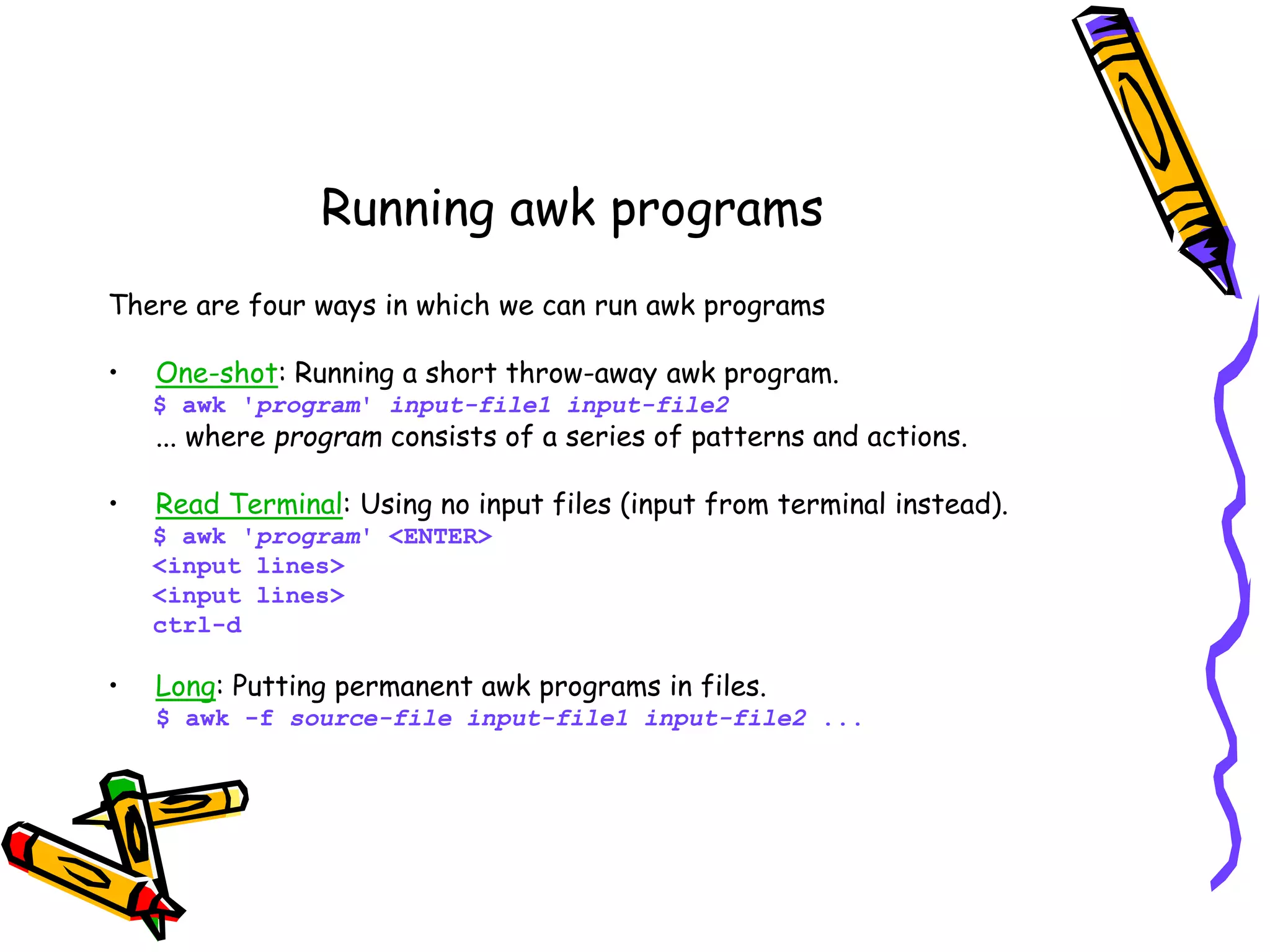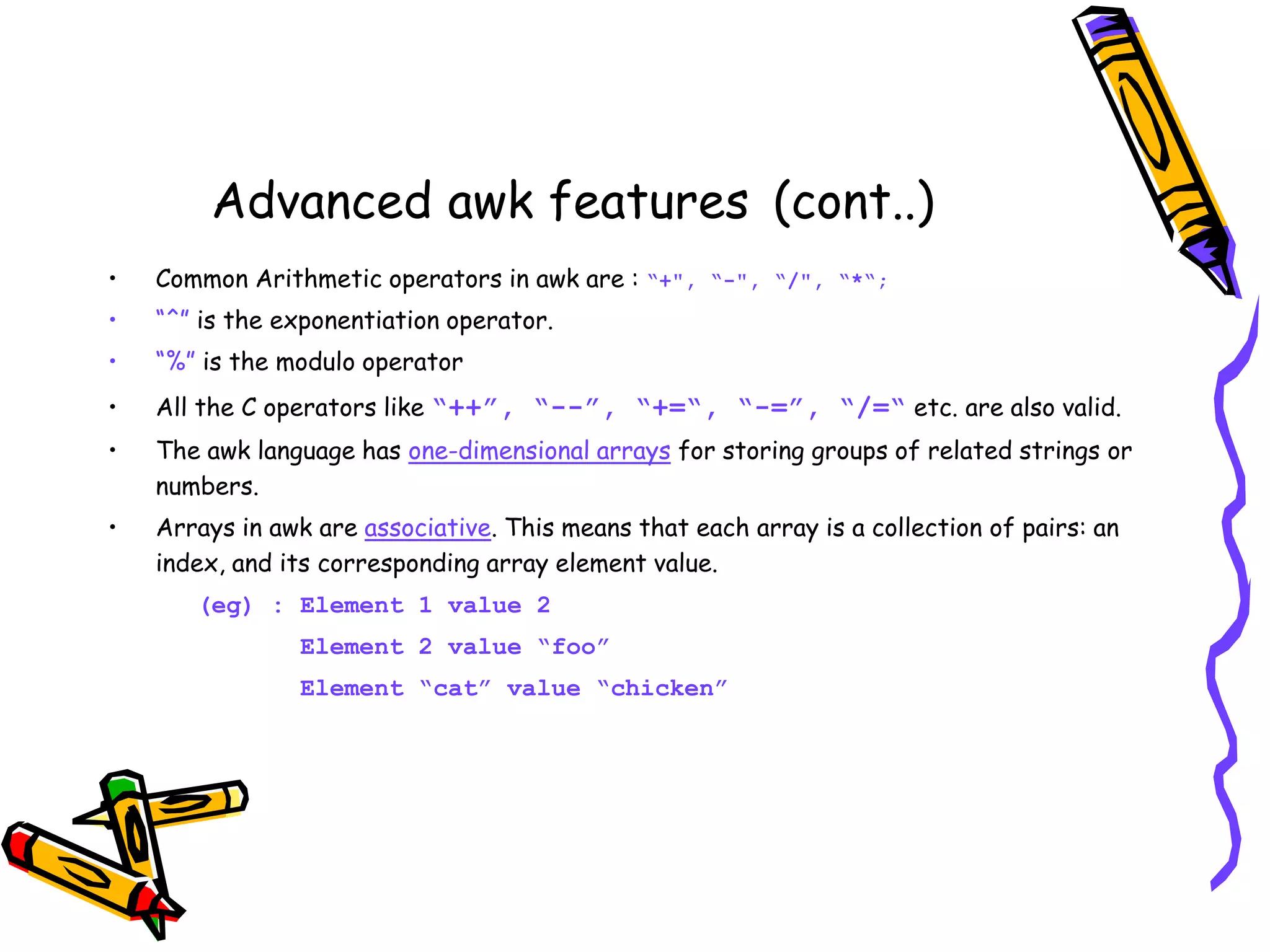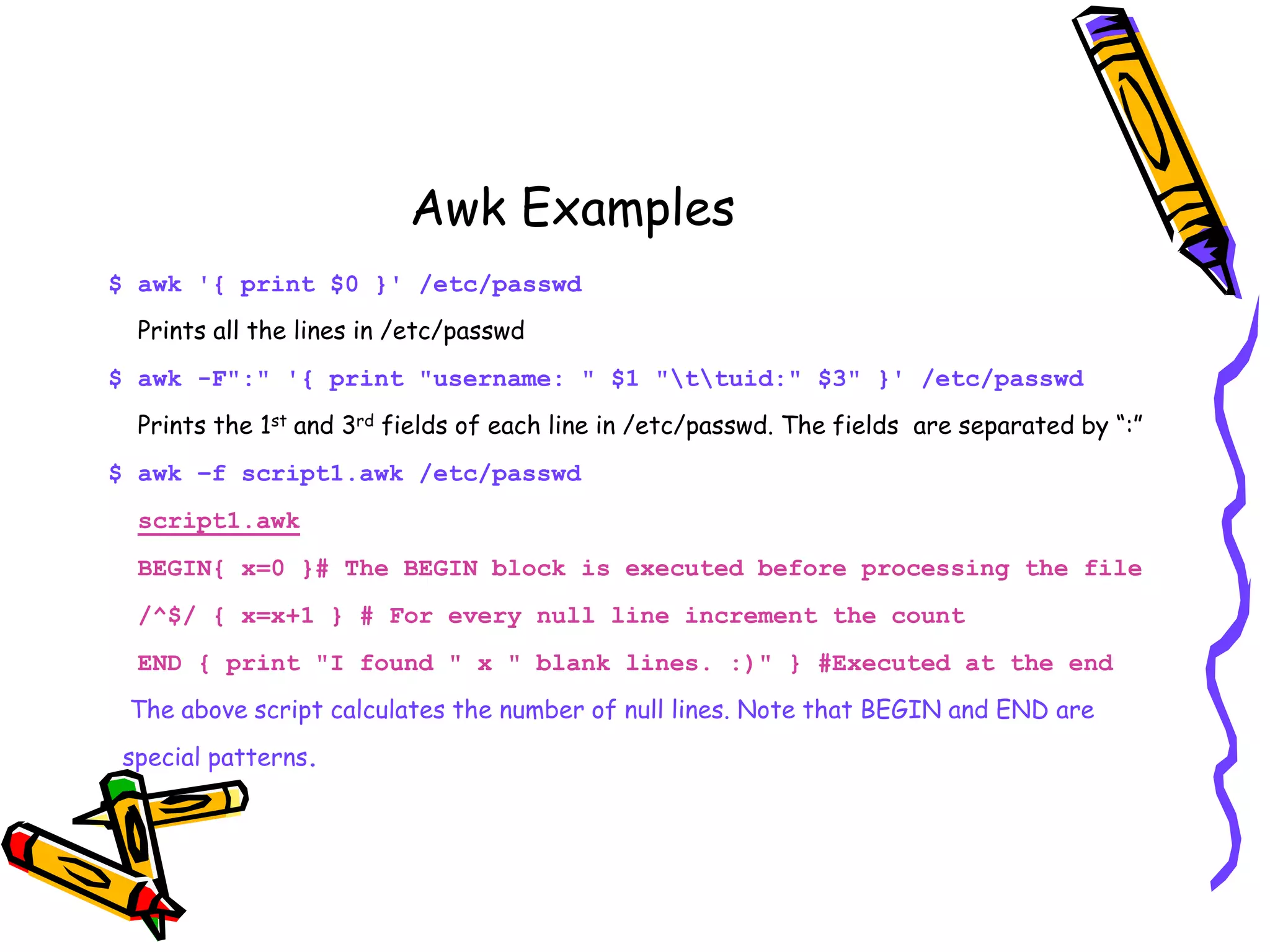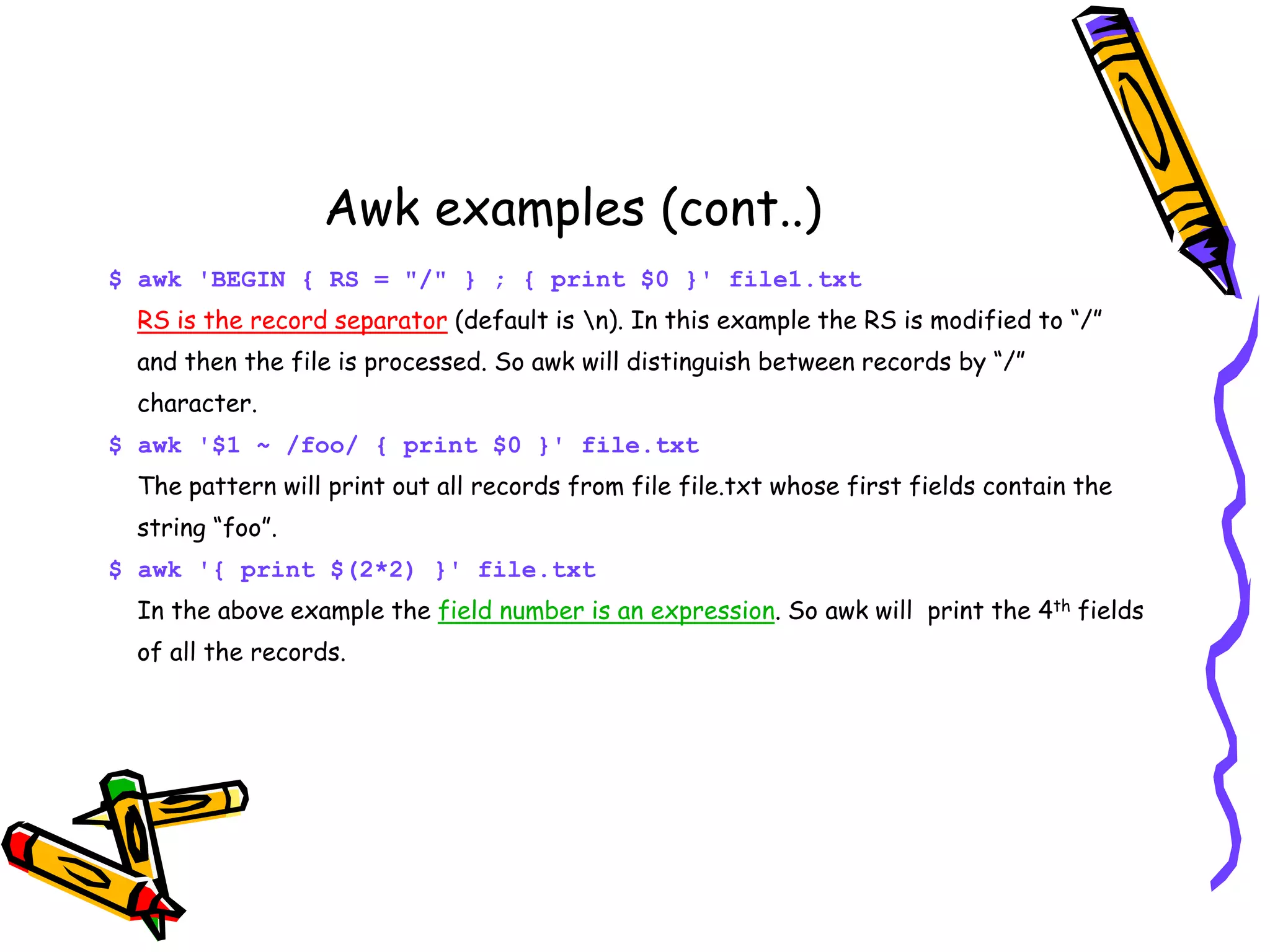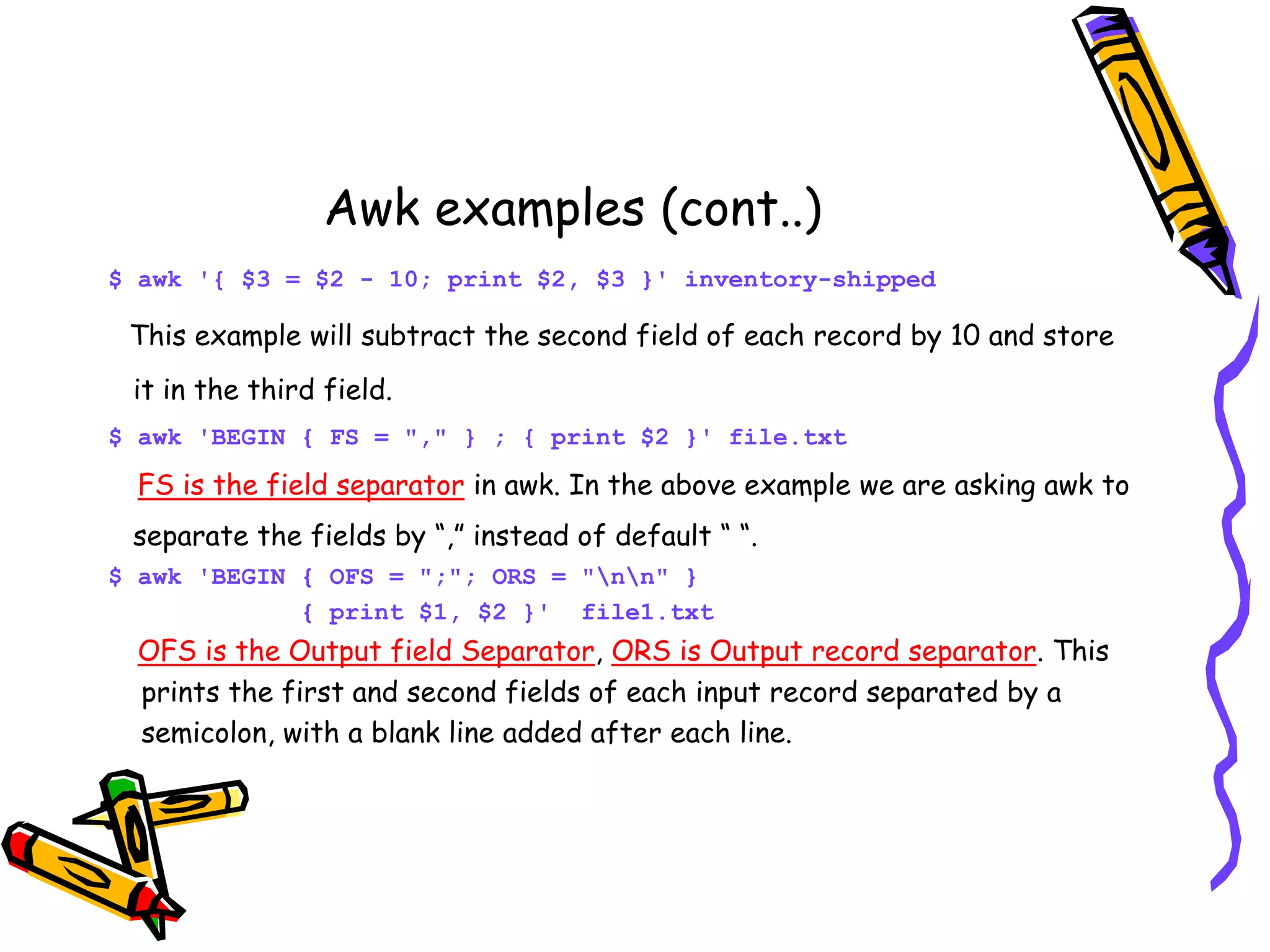This document provides an introduction to the awk programming language. It discusses what awk is, different versions of awk, the basic program structure and concepts in awk including patterns, actions, records and fields. The document also provides several examples of using awk to parse files and extract/manipulate data. It highlights advantages of awk such as its interpreted nature which avoids separate edit-compile-test cycles and makes it useful for data reporting and manipulation tasks.





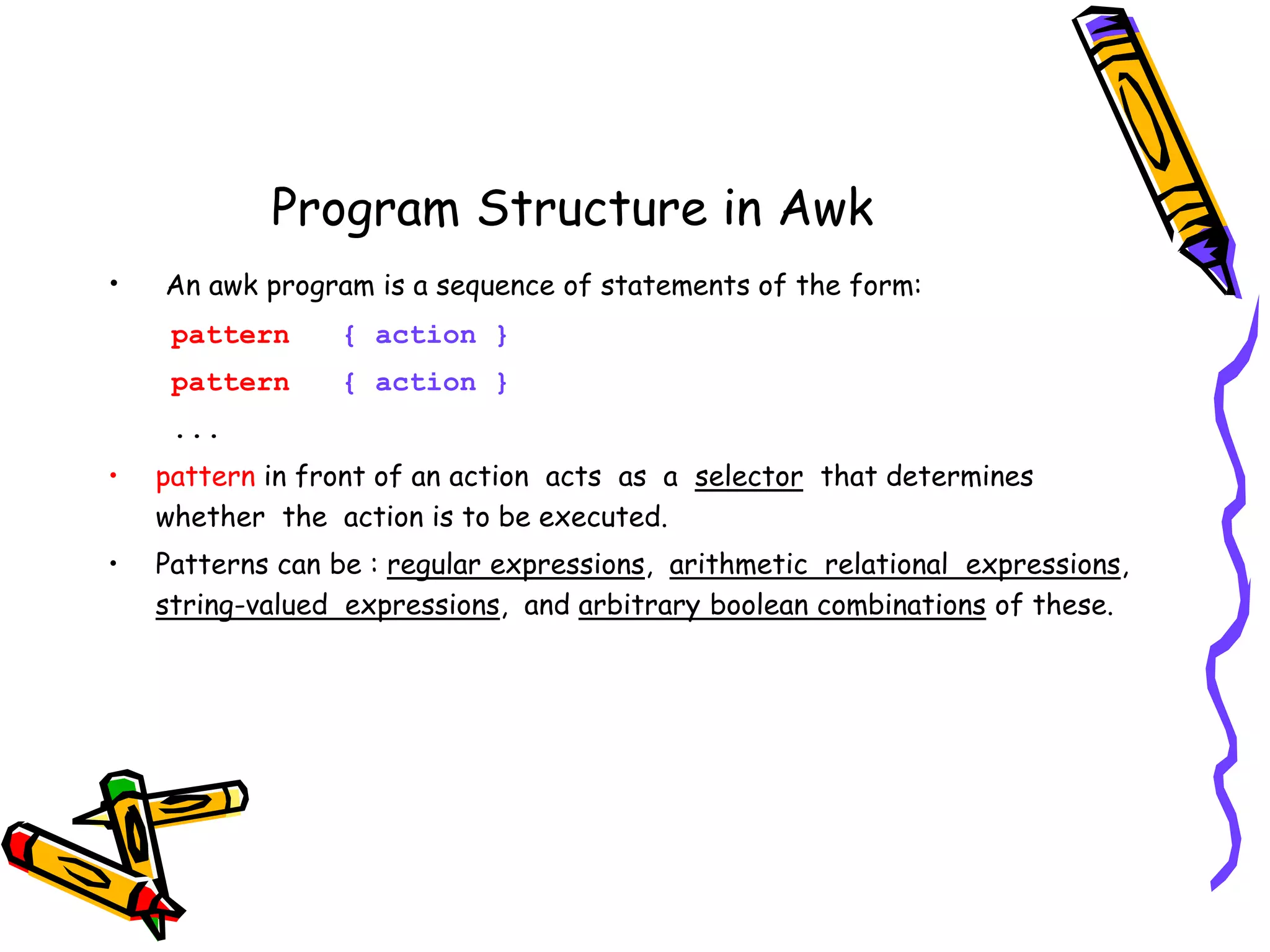

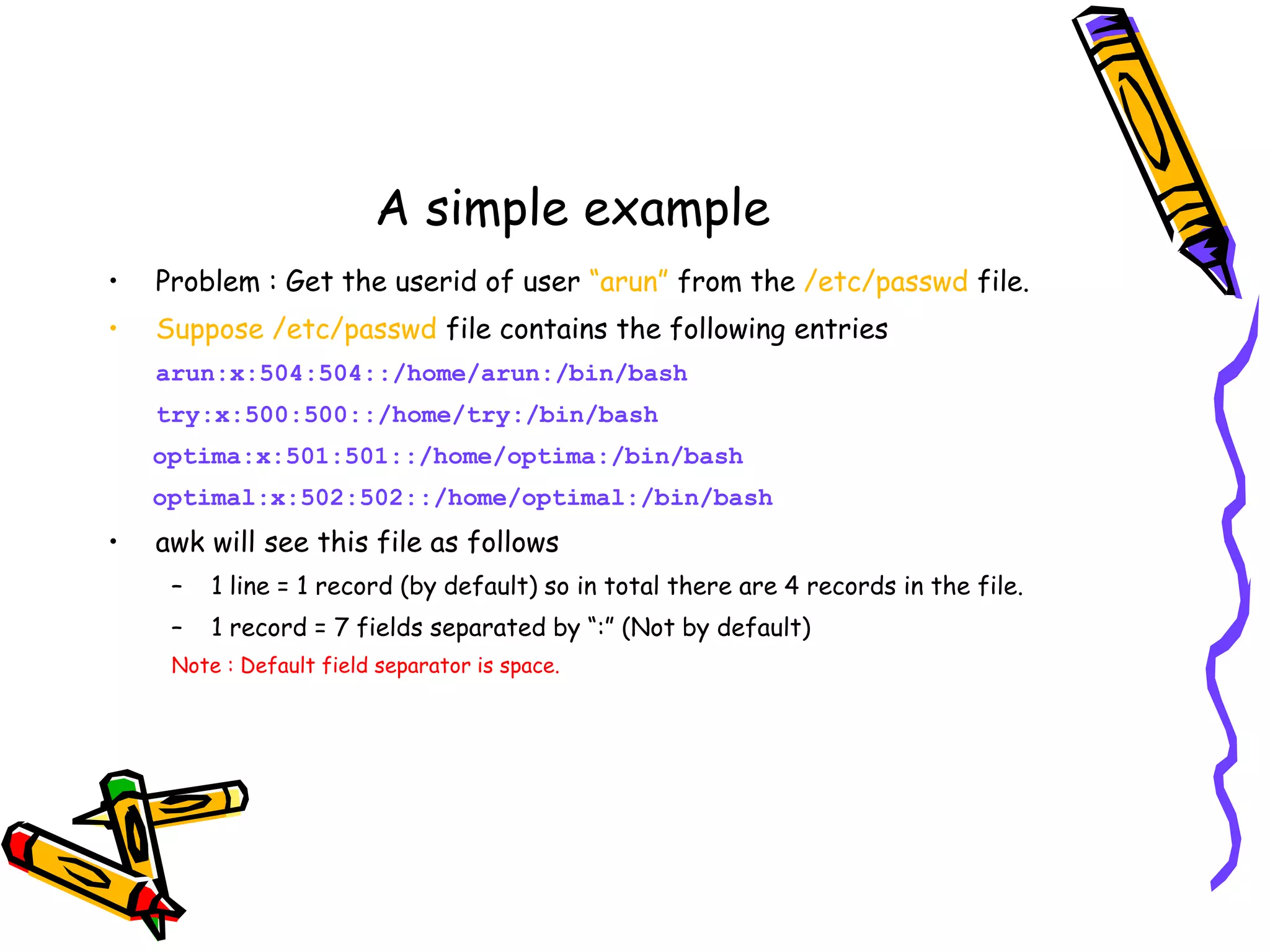
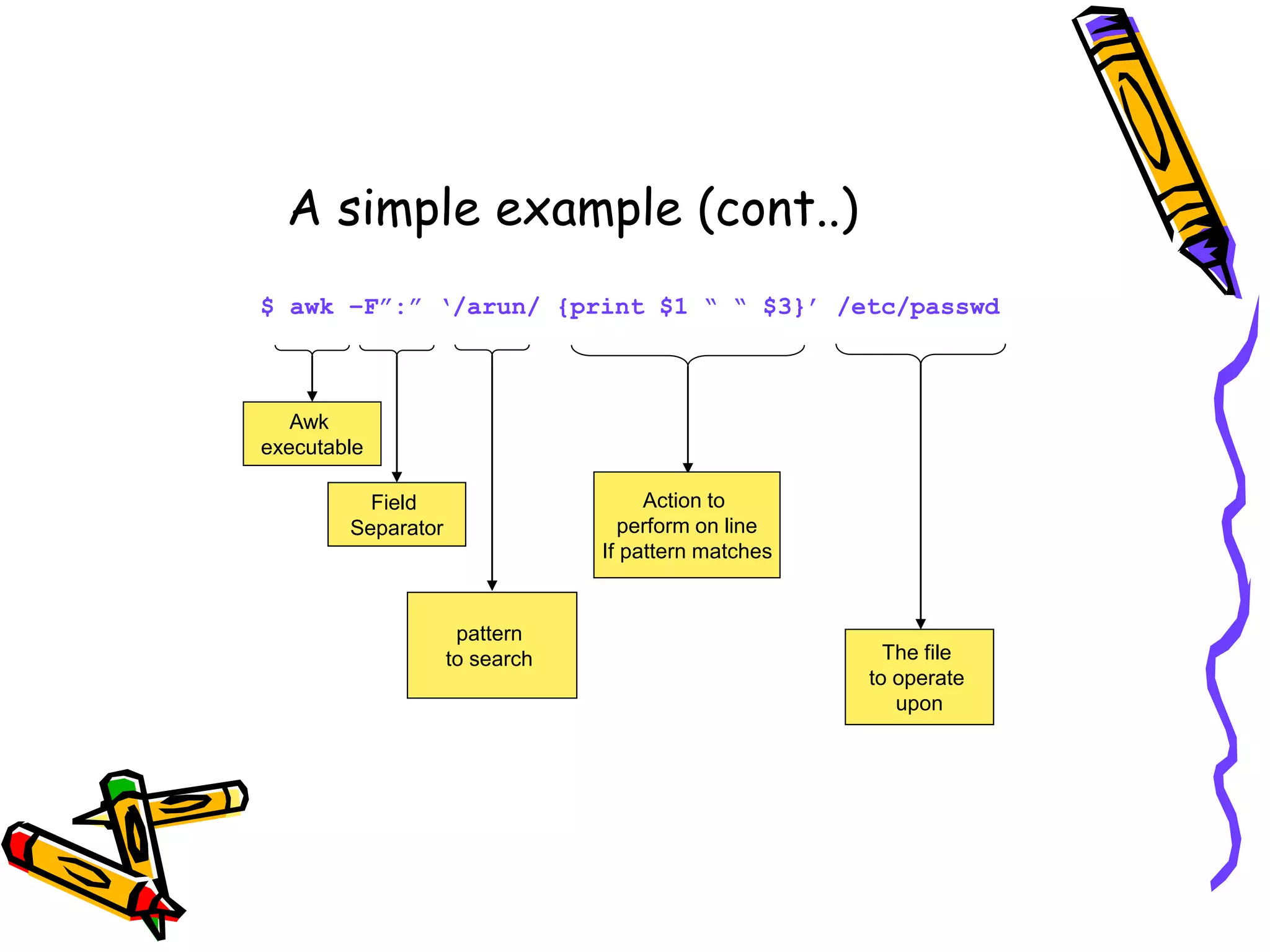
![A simple example (cont..) • The output of the above command will be [root@tux root]# awk -F":" ‘/arun/ {print $1 " " $3}’ /etc/passwd arun 504 [root@tux root]# • Another way to write the command is [root@tux root]# awk ‘BEGIN { FS=“:” } /arun/ {print $1 " " $3}’ /etc/passwd arun 504 [root@tux root]#](https://image.slidesharecdn.com/awkintro-230303034016-eddad2ef/75/awk_intro-ppt-10-2048.jpg)
